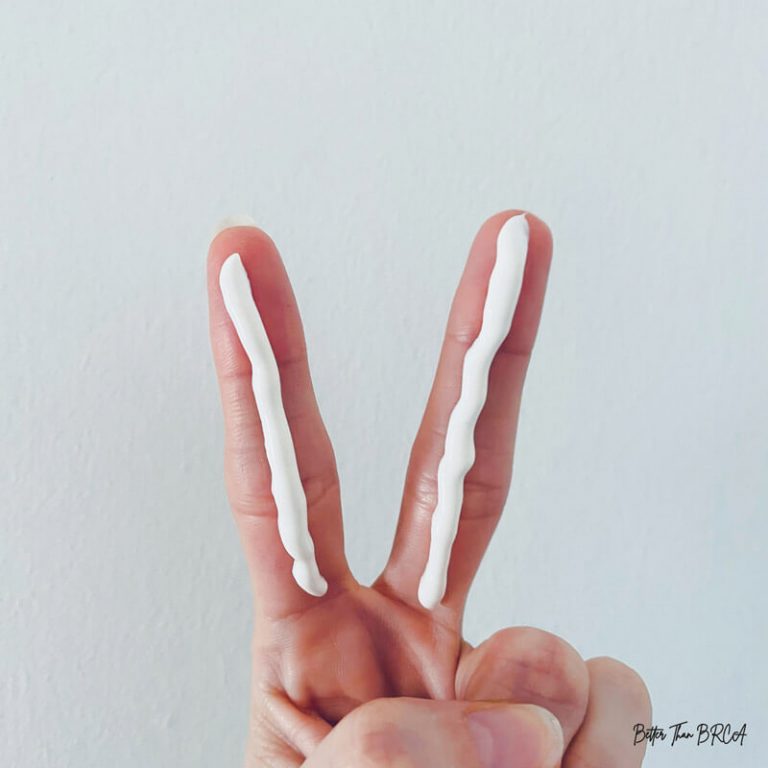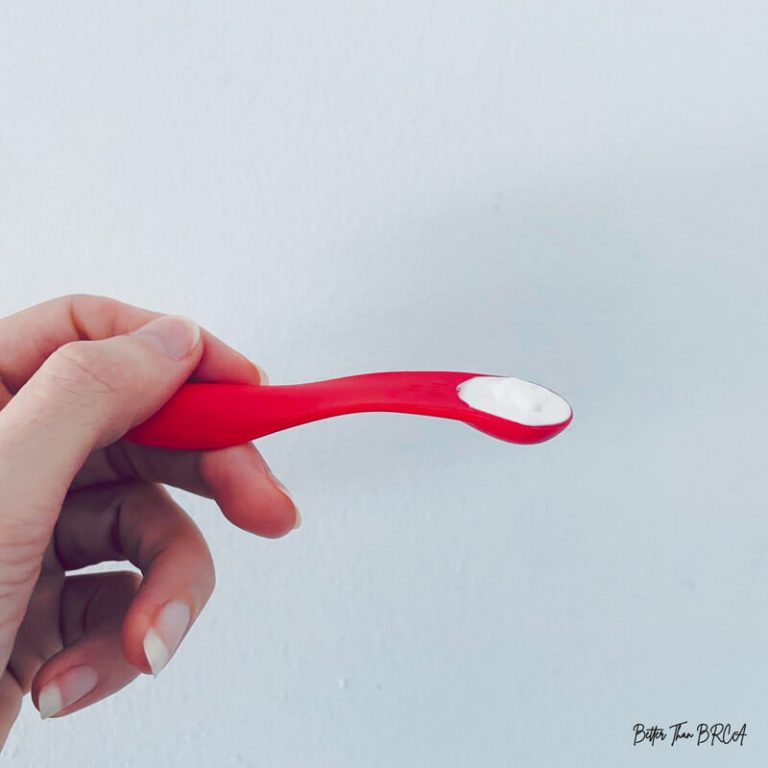First of all, it should be clarified that all of us who have ever been exposed to the sun and burned, have the potential for skin cancer to become our new reality. However, it should also be noted that skin cancer occurs in several types and not all are equally dangerous.
The most common in fair-skinned people are slow-growing basal cell carcinoma. Squamous cell carcinoma is also common. None of them are life-threatening, as they do not usually spread to other organs, but they still need to be treated.
The most dangerous of all is melanoma, which is a rare form of skin cancer but is responsible for a vast majority of all skin cancer deaths. When detected early, the 5-year survival rate for melanoma is 99 percent.
Skin cancer: BRCA mutation related risk
BRCA and melanoma
No studies have shown a statistically significant risk of melanoma in BRCA1 families.
Many articles and websites (especially cancer treatment centers) warn about a slightly increased risk of developing melanoma for people with the BRCA2 mutation.
Scientific studies in recent years have yielded conflicting results and regular skin check-ups are not included in the examination scheme. Some studies advise annual preventive checkups with a dermatologist, others believe that this is not necessary without other signs.
Therefore, prevention and regular skin self-exams are even more important for those with the BRCA2 mutation.
If you notice anything suspicious on your skin, go see a dermatologist IMMEDIATELY!
BRCA and skin cancer
One study showed that BRCA2 mutation carriers are at increased risk for skin cancer, compared with BRCA1 carriers, in particular for basal cell carcinoma.

So what information to trust?
I am on the side of caution and would recommend to everyone, but especially those with BRCA1 or BRCA2, greater caution in the sun, strict skin protection, and regular self-examination of the skin.
Skin cancer: prevention
Whether there is a genetically increased risk or not, prevention is paramount to prevent skin cancer! UV rays cannot be completely avoided, but the right measures can greatly reduce the damage they cause.
How to reduce the chance of skin cancer?
Don’t sunbathe, avoid tanning lamps and beds!
Avoid unnecessary sun exposure – especially between 10 am and 5 pm in the summer.
Use protective clothing and accessories (wide-brimmed hat, sunglasses).
Wear quality sunscreen year-round. Even in the winter and on rainy, foggy days.
Examine your skin for changes!
Protecting skin from sun damage
Since the sun cannot be completely avoided (harmful UV rays also reach the skin through windows), good protection is important. How do we protect ourselves?
- With high UVA and UVB protection
- With protective clothing
- With a sufficient amount of quality cream (it is necessary to apply two fingers of cream or a quarter of a teaspoon just to protect the face)
- By reapplying sunscreen every 2-4 hours in the summer.
Suggested reading:
Sun Protection: why, when and how much? – Tixibeauty
UV light – danger, protection, the latest findings in science – Cosmedoc
How to recognize quality sun protection?
In order to identify quality protection, it is necessary to distinguish between UVA and UVB rays and protection against them. UVB rays cause quickly visible burns, while UVA rays penetrate deeper into the skin and their effects are not immediately visible.
UVB protection is quite simple – SPF tag and that’s it. The number tells you how long your skin will be protected from UVB rays.
Of course, a sufficient amount must be applied. And it should also be taken into account that by sweating, wiping, and touching the skin, this number decreases. So even sunscreens that promise 8 hours of sun protection won’t protect you the same as soon as you apply them or after eight hours.
»UVA rays are present throughout the day, throughout the year, even when it is cloudy and pass through the glass. They are considered silent killers because, unlike UVB rays, you do not see the harmful effects of UVA rays immediately. UVA rays penetrate deeper into the skin than UVB rays, constantly destroying key substances in the skin that ensure the firmness and elasticity of the skin.«
– Tajka Selan, Cosmedoc
UVA protection, however, is something completely different. This is the information that many manufacturers hide from their customers.
For example, the EU has a standardized UVA label in the circle, which ensures that UVA protection achieves at least 1/3 of the promised UVB protection. If you buy SPF 50, it means UVA 16 or 160 minutes of protection against UVA rays.
Another way to label UVA protection is PPD (persistent pigment darkening). For more information on UVA protection labels, I recommend reading this Cosmedoc post: Testing standards and labeling of UVA protection.
»SPF primarily shows the level of protection against UVB rays that cause sunburn, not UVA. When SPF was developed there wasn’t any UVA awareness and we basically still don’t have a global standard for UVA protection, so you need to be looking for products that offer broad-spectrum protection and contain ingredients that provide UVA screening.
This is usually written on products (UVA sign in a circle, broad spectrum, UVA/UVB protection etc.) and the protection against UVA should be close to the stated SPF of the product (if not stated differently).«
– Tika Hribar, Tixibeauty
How long does sunscreen really protect us from UVB and UVA rays?
SPF 15 is the lowest recommended by experts. Considering most people do not apply enough sunscreen, to begin with, or re-apply it often enough, it’s better to choose high protection (at least SPF 30) all year round.
Sun Protection Factor (SPF): how long are we protected against UVB rays
SPF 10 (low protection): 10 x 10 minutes = 1 hour 40 minutes
SPF 15 (medium protection): 15 x 10 minutes = 2 hours 30 minutes
SPF 20 (medium protection): 20 x 10 minutes = 3 hours 20 minutes
SPF 30 (high protection): 30 x 10 minutes = 5 hours
SPF 50 (high protection): 50 x 10 minutes = 8 hours 10 minutes
Persistent Pigment Darkening (PPD): how long are we protected against UVA rays
PA + (blocks 50-70% UVA rays): PPD 2-4 = from 20 to 40 minutes
PA ++ (blocks 75-87% UVA rays): PPD 4-8 = from 40 to 80 minutes
PA +++ (blocks 87-94% UVA rays): PPD 8-16 = from 80 to 160 minutes
PA ++++ (blocks 94% + UVA rays): PPD 16 + = over 160 minutes
Source: Tixibeauty
How much sunscreen should you use?
In order to provide the skin with the protection stated on the product, it must be applied in a sufficient amount. And how much is that?
For the whole body at least 6 teaspoons of sunscreen, which means about:
- face: ¼ teaspoon (two full fingers)
- neck and ears: ¼ teaspoon
- cleavage: ¼ teaspoon
- front of the torso: 1 teaspoon
- back of the torso: 1 teaspoon
- arms: 1 teaspoon
- legs: 1 teaspoon for each leg
Sunscreen should be applied to all exposed parts of the skin. In a swimsuit, for example, you need to apply a minimum of 6 teaspoons all over your body, while in long (opaque) pants and a sleeveless shirt you will only apply it to your face, neck, cleavage and arms.
Remember to apply the protection also to hidden areas, such as the creases of the arms and legs, ears and between the toes.


Measuring spoons are extremely convenient for applying the right amount of protective cream on the face, neck, and cleavage – 1/4 teaspoon as pictured.
Skin cancer and self-exam - finding changes on your skin
Self-examination of the skin is crucial for the early detection of melanoma!
Examine your entire body (including your scalp!) every month and observe:
– newly created moles, pigmentations, or growths,
– moles that have changed size, shape, color – (ABCDE rule for the detection of melanoma),
– spots or wounds that itch, hurt, or do not heal.
If you see anything NEW, CHANGING, or UNUSUAL on your skin, go get checked by a dermatologist.
The ABCDEs of melanoma
A – Asymmetry: one half of the mole is unlike the other half.
B – Border: one half of the mole is unlike the other half.
C – Color: varying colors from one area to the next.
D – Diameter: melanomas are usually bigger than 6 millimeters.
E – Evolution: the mole is changing in size, shape, or color.
This post would not be possible without Tajka Selan (Cosmedoc) and Tika Hribar (Tixibeauty) who have been a tremendous help with their incredible cosmetic knowledge!



